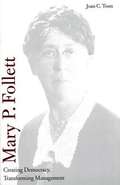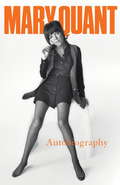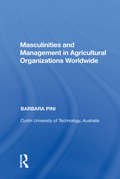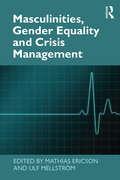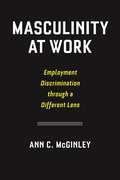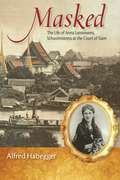- Table View
- List View
Mary Caroline Tillman at Egon Zehnder: Spotting Talent in the 21st Century
by Francesca Gino Bradley R. StaatsThis case investigates both micro and macro issues around strategic human capital development. First, it explores how Egon Zehnder, a leading global search and advisory firm, assesses talent in the firms for which it works. The case discusses the deployment of a unique potential model that substantially shifts how the company views individuals. Within this framework, Mary Caroline Tillman, the case protagonist, is faced with an evaluation decision between two candidates who have different competencies, past experience and potential. Second, the case also explores the macro issues of running a professional services firm. The case presents an opportunity to examine how and if the organization can change its focus to include more assessment opportunities.
Mary Caroline Tillman at Egon Zehnder: Spotting Talent in the 21st Century
by Francesca Gino Bradley R. StaatsThis case investigates both micro and macro issues around strategic human capital development. First, it explores how Egon Zehnder, a leading global search and advisory firm, assesses talent in the firms for which it works. The case discusses the deployment of a unique potential model that substantially shifts how the company views individuals. Within this framework, Mary Caroline Tillman, the case protagonist, is faced with an evaluation decision between two candidates who have different competencies, past experience and potential. Second, the case also explores the macro issues of running a professional services firm. The case presents an opportunity to examine how and if the organization can change its focus to include more assessment opportunities.
Mary Griffin at Derby Foods
by Anthony J. Mayo Joshua D. MargolisMary Griffin, Vice President of Consumer Products, must provide feedback to one of her direct reports, Simon York. York is a strong performer, but he has displayed some poor interpersonal skills in the manner in which he interacts with his team and the production staff. Griffin needs to provide feedback to help prevent York from derailing in his career at Derby Foods.
Mary Griffin at Derby Foods
by Anthony J. Mayo Joshua D. MargolisMary Griffin, Vice President of Consumer Products, must provide feedback to one of her direct reports, Simon York. York is a strong performer, but he has displayed some poor interpersonal skills in the manner in which he interacts with his team and the production staff. Griffin needs to provide feedback to help prevent York from derailing in his career at Derby Foods.
Mary Guerrero and the Advancement of Latinx Talent: Developing an Employee Resource Group at a Top Tier Bank (A)
by Rosabeth Moss Kanter Amy Hernandez TurciosMary Guerrero was a first-generation Latina and an investment banking analyst at a top tier bank on Wall Street-Bulge Bracket Bank (BBB). She was passionate about increasing representation of Latinx talent at her firm. She was already doing a lot of individual work to make this happen (e.g. reviewing candidate resumes at 2am after she had finished her assigned work). She wanted to scale her efforts and debated whether she should build a broader coalition to move the needle on Latinx talent representation despite having a demanding full-time workload.
Mary Guerrero and the Advancement of Latinx Talent: Developing an Employee Resource Group at a Top Tier Bank (B)
by Rosabeth Moss Kanter Amy Hernandez TurciosMary Guerrero decided to pursue the challenging road and kicked off Hispanic/Latinx Advancement and Career Engagement (HACE) at her Bulge Bracket Bank (BBB). For Mary, her larger purpose was to advance Latinx talent in the U.S. because she believed it was important for leadership at major U.S. firms to mirror the composition of the country. With Latinx representing almost 18.3% of the U.S. population but only holding 3.8% of board seats, she saw a problem that needed to be addressed.13 14 She understood what getting a job at a prestigious Bulge Bracket Bank on Wall Street meant for a Latinx. It meant not only learning hard skills like financial modeling but also earning credibility.15 Mary's life journey from growing up in a low-income neighborhood to earning a coveted spot on Wall Street was difficult and she wanted to make that path easier for others.
Mary Kay Cosmetics, Inc.
by John P. Kotter John M. StengrevicsIntroduces the student to Mary Kay Cosmetics, Inc., its business, its strategy, and its organization. Provides the necessary background for understanding the contributions of Mary Kay Ash, the company's founder and chairman.
Mary Kay Cosmetics, Inc.: Marketing Communications
by John A. Quelch Alice M. CourtMarketing executives at the company are considering the merits of a variety of communications programs designed to increase the effectiveness of the company's sales force of beauty consultants.
Mary Kay Cosmetics, Inc.: Sales Force Incentives (A)
by Robert L. Simons Hilary A. WestonDescribes the incentive system by which Mary Kay Cosmetics motivates the sales force of 200,000 independent agents who comprise the firm's only distribution channel. Illustrates the powerful effect on sales-force behavior that results when creative types of employee recognition are combined with financial incentives. Focuses on the challenges that managers face when they try to reduce program costs by modifying the VIP automobile program that awards the use of pink Cadillacs and other cars to successful sales agents. A detailed description of the parameters and formulas that drive the recognition and reward programs is provided.
Mary Kay Cosmetics, Inc.: Sales Force Incentives (B)
by Robert L. Simons Hilary A. WestonDetails the changes made to the VIP automobile plan.
Mary Kay Cosmetics: Asian Market Entry (A)
by John A. Quelch Nathalie LaidlerIn February 1993, Curran Dandurand, senior vice president of Mary Kay Cosmetics Inc.'s global marketing group, was reflecting on the company's international operations. Mary Kay Cosmetics Inc. products had been sold outside the United States for over 15 years, but by 1992, international sales represented only 11% of the $1 billion total. In contrast, one of Mary Kay Cosmetics' U.S. competitors, Avon Products Inc., derived over 55% of its $3.6 billion sales (at wholesale prices) from international markets in 1992.
Mary Kay Inc.: Enriching Women's Lives while Embracing Change
by Elie Ofek Julia Kelley K. Shelette StewartIn December 2020, Mary Kay Inc. Chief Marketing Officer Sheryl Adkins-Green considered several strategic dilemmas. Founded in 1963 by Mary Kay Ash, Mary Kay was a direct sales company whose Independent Beauty Consultants purchased its beauty and cosmetics products at wholesale and sold them to end-consumers at retail. As the coronavirus pandemic spread in 2020, Mary Kay worked to equip its Consultants with digital tools and strategies to help them run their businesses remotely. Adkins-Green and the Mary Kay team were now looking for ways to continue refining the company's digital approach and product sampling strategy. Looking beyond COVID-19, Adkins-Green and her team had several other big questions to consider around product innovation, the competitive landscape, navigating the digital world and its implications for retail, and communicating its brand values to the next generation-all while honoring and staying true to the rich history, heritage, and culture that had served as the foundation of Mary Kay for the past 57 years.
Mary P. Follett: Creating Democracy, Transforming Management
by Joan C. TonnMary P. Follett (1868-1933) brought new dimensions to the theory and practice of management and was one of America's preeminent thinkers about democracy and social organization. The ideas Follett developed in the early twentieth century continue even today to challenge thinking about business and civic concerns. This book, the first biography of Follett, illuminates the life of this intriguing woman and reveals how she devised her farsighted theories about the organization of human relations. --BOOK JACKET. Title Summary field provided by Blackwell North America, Inc. All Rights Reserved
Mary Quant: My Autobiography
by Mary QuantMary Quant defined the 60s as a renowned fashion designer and all-round style icon, most famous for inventing the miniskirt and hot pants. Not afraid of novelty or experimentation, she showed a generation of women how to dress to please themselves. Quant's career was fulsome and varied - from opening up a clothes shop on the King's Road called Bazaar, designing the interior of the Mini (including her signature daisy), to her vast cosmetics company, Mary Quant Limited, she has widespread appeal to generations of women. In her autobiography, Mary combines the inspirational story of a stellar career with the touching personal story of her life with the man she loved, Alexander Plunkett-Green and her role of mother to their son, Orlando. Mary Quant gives us a glimpse of the real women behind the icon.
Mary Quant: My Autobiography
by Mary QuantMary Quant defined the 60s as a renowned fashion designer and all-round style icon, most famous for inventing the miniskirt and hot pants. Not afraid of novelty or experimentation, she showed a generation of women how to dress to please themselves. Quant's career was fulsome and varied - from opening up a clothes shop on the King's Road called Bazaar, designing the interior of the Mini (including her signature daisy), to her vast cosmetics company, Mary Quant Limited, she has widespread appeal to generations of women. In her autobiography, Mary combines the inspirational story of a stellar career with the touching personal story of her life with the man she loved, Alexander Plunkett-Green and her role of mother to their son, Orlando. Mary Quant gives us a glimpse of the real women behind the icon.
Masayoshi Son and the Vision Fund
by Tom Nicholas Ramana Nanda Benjamin N. RothIn October 2016 SoftBank Group Corp., the Japanese conglomerate giant caused a significant shock to the worldwide market for venture capital and private equity by announcing the Vision Fund, the largest tech investment fund in the world at close to $100 billion. The reputation of legendary SoftBank CEO Masayoshi Son depended on the success of the Vision Fund, a considerable challenge given the difficulties associated with organizing a large pool of capital, investing at scale and generating VC-style returns. By effectively anointing category leaders and deterring competitive entry, would the Vision Fund accelerate innovation or undermine the market forces that have typically produced social value by spurring rapid technological change?
Masco Corp. (A)
by Michael E. Porter Cynthia A. Montgomery Charles W. MoormanDescribes the history and corporate position of a large and successful producer of faucets and related household products. Masco is considering entry into the $14 billion furniture industry. Designed to be used with Household Furniture Industry in 1986 in a strategy course on corporate strategy for diversified firms.
Masco Corporation (B)
by Michael E. Porter Cynthia A. Montgomery Charles W. MoormanDescribes Masco's initial entry strategy and is designed as an in-class handout.
Masculinities and Management in Agricultural Organizations Worldwide (Gender And Organizational Theory Ser.)
by Barbara PiniUsing contemporary gender theory to examine gender and rurality beyond that of simply women/femininities, this illuminating book accurately locates the subject of masculinities within the rural/agricultural context. While there has been a wealth of literature on men and masculinities published in recent years, the climate of ideas has been typically experienced through an urban lens. This book therefore investigates new conceptual territory. Embedded in the literature on gender and rurality as well as the scholarship on gender and organizations/management, the book draws on an in-depth ethnographic study of gender relations in Australian agricultural politics. It will speak to academic audiences in rural social sciences, gender studies and management/organization studies.
Masculinities in Transition
by Victoria Robinson Jenny HockeyContributing to feminist approaches to masculinities, this book examines men's contextual experiences of masculine identity. Drawing on new data which compares men as they move across and between public and domestic spaces, it explores the implications of this for the nature of contemporary masculinity.
Masculinities, Gender Equality and Crisis Management (Routledge Key Themes in Health and Society)
by Ulf Mellström Mathias EricsonThe overarching mission of the rescue services comprises three main areas of responsibility: protection against disasters and accidents; crisis management; and civil defence. This mission covers a long chain of obligations in trying to improve societal prevention capabilities and manage threats, risks, accidents, and disasters concerning generic as well as individual safety. It follows a reactive social chain of threat-risk-crisis-crisis management-care-rehabilitation. The authors in this book show that the interesting occupational characteristics of these societal duties are their connection to gender and crisis management in a wider sense. Gendered practices, processes, identities, and symbols are analytical lenses that provide a particular understanding and explanatory base that has received far too little attention in the academic literature. This book identifies four major themes in relation to a gendered understanding of the rescue services, and more generally emergency work: Masculine heroism Intersectional understandings of sexuality, class, and race Gender and technology Gender equality and mainstreaming processes This book shows how the rescue services constitute a productive ground for contemporary gender studies, including feminist theory, masculinity and sexuality studies. Its critical perspective provides new directions for emergency work and crisis management in a broader sense, and in particular for scholars and practitioners in these areas.
Masculinity at Work: Employment Discrimination through a Different Lens
by Ann C. McGinleyIn late October 2013, the Miami Dolphins’ player Jonathan Martin walked out on his team and checked into a mental health institution. The original story implied that Martin could not take the professional pressure. Within days, the story changed. News sources reported that Martin’s teammates had repeatedly bullied him and as a result, the twenty-four year-old African American player suffered serious depression. The response was skeptical, and many opined the harassment involved was simply locker room banter that all players endure; essentially, that boys will be boys.Masculinity at Work uses the Jonathan Martin case and others to analyze Title VII of the Civil Rights Act of 1964 through the lens of masculinities theory. Illustrating how harassment and discrimination can occur because of sex even if the gendered nature of the behavior remains unseen to onlookers, this book educates readers about the invisibility of masculine structures and practices, how society constructs concepts of masculinity, and how men (and sometimes women) perform masculinity in different ways depending on their identities and situational contexts. Using a sophisticated mix of legal, gender, and social science analysis, the author demonstrates how masculinities theory can also offer significant insights into the behaviors and motivations of employers, as well as workplace structures that disadvantage both men and women who do not conform to gender stereotypes. Both a theoretical disposition and a practical guide for legal counsel and judges on the interpretation of sex and race discrimination cases, Masculinity at Work explains how this theory can be used to interpret Title VII in new, liberating ways.
Masked
by Alfred HabeggerA brave British widow goes to Siam and-by dint of her principled and indomitable character-inspires that despotic nation to abolish slavery and absolute rule: this appealing legend first took shape after the Civil War when Anna Leonowens came to America from Bangkok and succeeded in becoming a celebrity author and lecturer. Three decades after her death, in the 1940s and 1950s, the story would be transformed into a powerful Western myth by Margaret Landon's best-selling book "Anna and the King of Siam" and Rodgers and Hammerstein's musical "The King and I. " But who was Leonowens and why did her story take hold? Although it has been known for some time that she was of Anglo-Indian parentage and that her tales about the Siamese court are unreliable, not until now, with the publication of "Masked," has there been a deeply researched account of her extraordinary life. Alfred Habegger, an award-winning biographer, draws on the archives of five continents and recent Thai-language scholarship to disclose the complex person behind the mask and the troubling facts behind the myth. He also ponders the curious fit between Leonowens's compelling fabrications and the New World's innocent dreams-in particular the dream that democracy can be spread through quick and easy interventions. Exploring the full historic complexity of what it once meant to pass as white, "Masked" pays close attention to Leonowens's midlevel origins in British India, her education at a Bombay charity school for Eurasian children, her material and social milieu in Australia and Singapore, the stresses she endured in Bangkok as a working widow, the latent melancholy that often afflicted her, the problematic aspects of her self-invention, and the welcome she found in America, where a circle of elite New England abolitionists who knew nothing about Southeast Asia gave her their uncritical support. Her embellished story would again capture America's imagination as World War II ended and a newly interventionist United States looked toward Asia. "
Masking in the Pandemic: Materiality, Interaction, and Moral Practice (Consumption and Public Life)
by Sophie Woodward Vanessa May Owen Abbott Leah Gilman Robert MeckinThis book assumes an “everyday life” perspective towards masking in public spaces in the UK during the Covid-19 pandemic. Facemasks are perhaps one of the most tangible ways in which the changes wrought by the Covid-19 pandemic were made visible. In the space of a few months in 2020, masking in the UK went from being almost non-existent in public to becoming widespread, both before and after the UK government mandated masking in most enclosed public spaces in July 2020. In this context, the speed and scale of the introduction of masking in public settings offers sociologists a rare chance to document the (contested) emergence of a new social practice. We argue that the nature of masking during the pandemic means that masking practices need to be understood through the entwinement of material, interactional, and moral dimensions. We develop a relational perspective to explore the relationship between the materiality and moral significance of masking, and how this translated into the development of masking practices in public spaces. The authors argue further that the specific context of masking during the pandemic provides sociologists with a unique lens to think through the nature of material, interactional, and moral practices in general.

